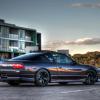Announcements
-
Similar Content
-
Latest Posts
-
Yep, totally get that. However hooking in for Generator back up is only a few hundred bucks for the wiring. You could put a couple of those in (for different circuits explicitly) and run a couple of baby generators. Bonus, you can balance them across different circuits, and now have backups in your backup. I'm looking at buying places that won't even have water etc, and I don't mind the idea of getting off the electric grid either, even with everything you've said. This country already has enough power outages that even the mains grid isn't that reliable anymore. I do agree though on spending a bit more to get better gear, and to add some extra redundancy in to the system too.
-
By Dose Pipe Sutututu · Posted
You can set hard reserves on your battery system, and it can't be discharged past that. -
That sounds like an excellent idea. But total self-sufficiency means exactly that. You have no-one else to blame when your system faults out and you have no power for a week or two while it gets fixed. You'd have to go the whole hog and get a diesel genny and all the switchover gear, to get you through such times. And, despite the fact that over 20 years, my system has been pretty reliable**, I have seen so many inverter explosions (or less dramatic deaths), panel and roof JB fires, and so on, over that time, to know that the stuff is the same as any other bulk Chinese manufactured stuff. The failure rate is well above zero - both on the equipment and on behalf of the meth addled installation labour force. And then..... warranty and means of redress against the supplier you bought the gear from. Best I can tell is that only a handful of solar companies are still around within 5 years of starting their advertising pitch. They disappear and phoenix like crazy. So, as per 1st paragraph, I suspect the only way to is go balls deep and spend maybe 2-3 times as much as you might think, so that you have every base covered. Plus, know and understand your gear intimately, so you can diagnose problems, sort them out yourself, etc, etc. Plus, probably have to consider upgrading various parts as the years pass, to maintain compatibility with newer stuff, performance and reliability, etc, etc. Whereas, remaining attached to the grid has an ongoing cost that keeps going up even if you use bugger all power from it. But it does provide the fallback in case of the worst case with your own gear. You either pay up front or as you go, I suspect.
-
Add more solar panels to the array. Call the electricity company and tell them you're moving out... Live off grid electric wise
-



![[SKYHI]](http://saufiles.s3.ap-southeast-2.amazonaws.com/monthly_2022_12/DSC00168.thumb.jpg.a90d7ff08652d4dc85ab9b2ff27dade7.jpg)


Recommended Posts
Create an account or sign in to comment
You need to be a member in order to leave a comment
Create an account
Sign up for a new account in our community. It's easy!
Register a new accountSign in
Already have an account? Sign in here.
Sign In Now